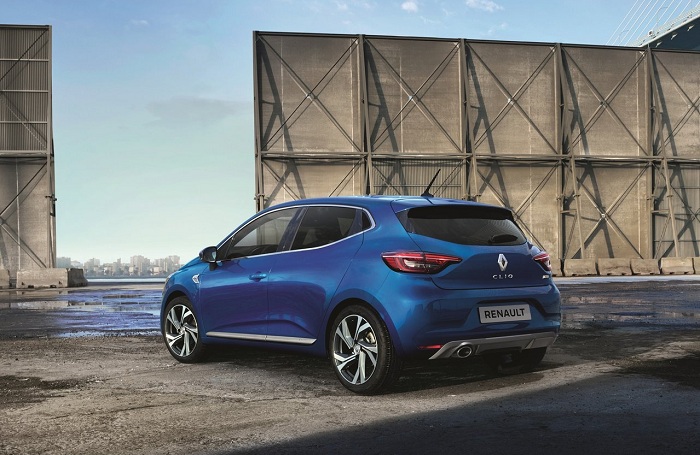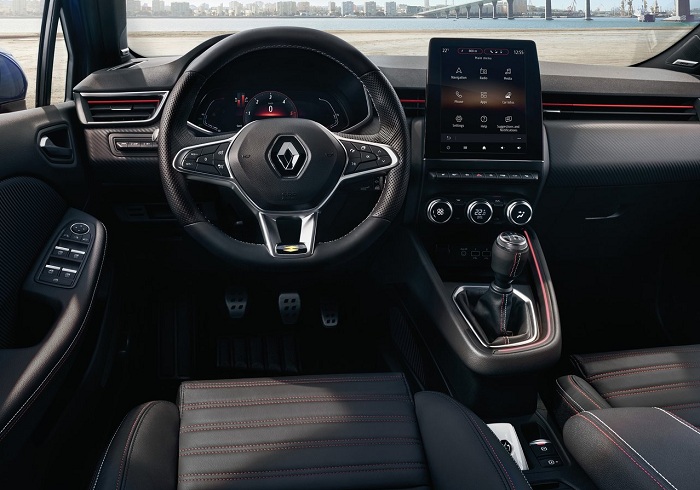Claimed to “rewrite the rulebook”, the second generation Clio to be penned by the automaker’s Head of Design, Laurens van den Acker, takes heavily after the Megane as indicated by the earlier leaks, in the form of full C-shaped LED headlights that cuts into the new front bumper, a thinner grille with an oversized Renault diamond logo, new 17-inch alloy wheels on top-spec models and extensive use of chrome detailing underneath the windows.
Featuring a more prominent shoulder line and with new thinner C-shaped taillight clusters, the same concealed rear door handles as its predecessor and a selection of 10 new colours including the Valencia Orange and Celadon Blue launch hues, the newcomer is also fresh underneath with a switch to alliance partner Nissan’s CMF-B platform that currently underpins the Micra, which has resulted in a 14mm reduction in overall length, but with boot space having improved by 26-litres to 391-litres with the rear seats up.
A new addition is the RS-Line that replaces the previous GT-Line and includes exterior add-ons such as bespoke 17-inch alloy wheels, a satin silver rear diffuser, a honeycomb design for the grille, a silver blade integrated into the front bumper and a Megane RS inspired bodykit.

Inside, and as indicated by the pictures released on Monday (January 28th), the Clio’s interior is more revolutionary than its exterior, with more extensive use of soft-touch materials on the dashboard, doors and the redesigned centre console and an all-digital instrument cluster that measures either five or ten-inches, the latter having the added function of displaying the satellite navigation.
As alluded to earlier, pride of place goes to the new tablet-like 9.3-inch touchscreen infotainment system with Apple CarPlay and Android Auto, in addition to being the display for the reverse camera. As well as new seats claimed to improve shoulder room and designed with a longer base for added support, the Clio further receives a steering wheel similar to that of the Nissan Qashqai, and a selection of customisable trim pieces. In the case of the RS-Line, sport seats, a perforated leather steering wheel with RS badging and red 12 o’clock marking, faux carbon-fibre inserts, alloy pedals and red stitching distinguishes the interior from lesser models.
Despite touting the Clio as the most advancement in its segment, no details regarding the much vaunted Level 2 autonomous driving capability has made been. The same applies to the range of engines with Renault only stating that the Clio will become the first to receive its e-Tech hybrid system in 2022.

As with the recently updated Micra though, speculation is that Clio will ditch the long-serving 898cc three-cylinder engine for the new 1.0-litre triple in two states of tune; 74kW/160Nm and 85kW/180Nm, the latter likely to be reserved for the RS-Line similar to the Micra N-Sport, with further choices set to include the 1.3-litre turbocharged petrol co-developed with Daimler, a heavily revised version of the 1.5 dCi and a detuned take on the Megane RS’ 1.8-litre motor that will allegedly power the Clio RS.
While sales in Europe will commence soon after Geneva, Renault South Africa is only expected to bring the Clio to market towards the end of 2019 or in early 2020.
















